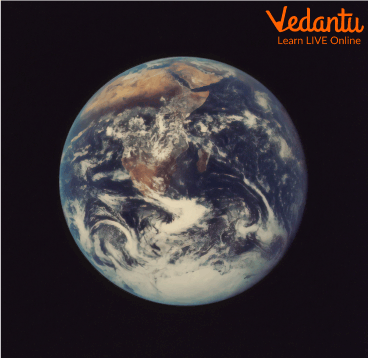




What is Matter?
The matter is the stuff that makes up the universe. It's anything that has mass and occupies space. Matter is made up of atoms and is the smallest particle of an element that have the chemical properties of that element. There are three states of matter: solid, liquid, and gas. A fourth state, plasma, is sometimes considered a separate state of matter, but it's just a gas that has been heated so much that the atoms become ionized or electrically charged. In this article we will see each of them in detail. Also we will see some amazing facts about states of matter.
Different States of Matter
Let’s see some facts about states of matter while going through different states of matter. Following are the different states of matter:
Solid State: Particles in solids are densely or closely packed. Because the gaps between the particles are so small, compressing them is difficult. The volume and shape of a solid are fixed. Solid particles can only vibrate about their mean position and cannot move due to their hard structure. Solids include things like solid ice, sugar, rock, and wood.

A Stone
Liquid State: Particles in a liquid state of matter are less closely packed than those in a solid state. Liquids take on the form of the container in which they are stored. Liquids are difficult to compress because particles have less area to move in. Liquids have a constant volume but no constant shape. Liquids have a faster rate of diffusion than solids. Water, milk, blood, coffee, and other liquids are examples of states of matter.

Water
Gas State: Particles in gases are widely apart from one another. The particle's attraction is negligible, and they can move freely. Gases do not have a defined volume or shape. When compared to solids and liquids, the gaseous state has the highest compressibility. Diffusion occurs at a faster pace than in solids and liquids. Particles have a higher kinetic energy than solids and liquids. Air, helium, nitrogen, oxygen, carbon dioxide, and other gases are examples.

Balloons
Plasma State: Plasma is a kind of material that is not commonly seen. Plasma particles have extraordinarily high kinetic energy. Electricity is used to ionise noble gases, resulting in glowing indications that are effectively plasma. Stars are superheated forms of plasma.
Following are some of the facts about plasma state of matter:
Plasma is the most common state of matter in the entire universe. We see it here on Earth in the form of things like lightning and the Northern and Southern Lights.
Plasma is also used to make fluorescent light bulbs and plasma televisions. Even our Sun and most stars are big balls of plasma.
Your house television operates by illuminating each of its pixels on the screen with a tiny bit of charged gas. And happens because of the Plasma.
Things Made of Matter
Here are some examples of things made up of matter:
1. Animals

Animals
Humans
Air
Water

A Water Body
2. Earth

Earth
Stars
Sun
Trees

Trees
Planets
Moon
Nonliving things
Food
Houses
Roads, etc
Why Is Matter Important?
Matter is very important for us because it has mass and it occupies some space. Therefore, all these things that we can touch and see are made up of matter. Thus, we can conclude that without matter none of our world as we know it now, would exist, hence matter is very vital for us and the world.
What is Dark Matter?
Dark matter is made up of particles that do not absorb, reflect, or emit light, making them invisible to electromagnetic radiation. Dark matter is stuff that cannot be seen with the naked eye.
Interesting Facts About Dark Matter
Following are some of the interesting facts about dark matter:
Dark matter makes for around 85 percent of total matter in the cosmos, accounting for more than five times the amount of all conventional matter.
Dark matter was crucial in the development of galaxies.
Astronomical surveys are used by researchers to create maps of the location of dark matter in the cosmos based on how light from distant galaxies bends as it travels to us.
Fun Facts About States of Matter
Below are some of the facts about matter for kids or we can call it as important facts about matter:
The beam is a very enigmatic state of matter. It is formed differently than solids, liquids, gases, and plasmas. Scientists are at a loss to describe the nature of the beam.
Filtering and sieving are used to separate liquids from solids.
The alternative method of converting a solid to a liquid is dissolving. Salt, for example, dissolves in a cup of water.
Sample Questions
State whether the statements given below are true or not
1. Everything around is made up of matter.
Ans: True
2. Our bodies are not made up of matter.
Ans: False, Our bodies are made up of matter.
3. The air we breathe in, is also a state of matter.
Ans: True
4. Matter can exist in five different states.
Ans: False, Matter can exist in 3 different states.
5. The three states are interchangeable.
Ans: True
Learn by Doing
Complete the statements mentioned below by filling in the blanks by choosing the most appropriate options:
1. Which of the following is made up of matter?
Animals
Humans
Rivers
All of the above
Ans: d
2. Matter is made up of _________.
Atoms
Subparticles
Things
None of the above
Ans: a
3. The three states of matter are:
Solid
Liquid
Gas
All of the above
Ans: d
4. Solid state has the __________ attractive force between its constituent particles.
Strongest
Weakest
Both of the above
None of the above
Ans: a
5. Conversion of liquid into gas is known as ______________.
Vapourisation
Condensation
Sublimation
None of the above.
Ans: a
Summary
The matter is the stuff that makes up the universe. It is everything that has mass and volume. The matter is made up of atoms, the smallest particles of an element. Atoms comprise even smaller particles called protons, neutrons, and electrons. Matter can exist in different states, depending on its temperature. At room temperature, matter exists as a solid, liquid, or gas. We have also covered the topic of dark matter, where we have seen some interesting facts about dark matter. Later in this article, we see some important facts about the matter. If you still have any questions on the state of the matter, do comment below.
FAQs on Amazing Facts About Matter
1. What is a simple definition of matter for students?
Matter is anything that has mass (an amount of 'stuff' in it) and volume (it takes up space). Everything you can touch, from a book to water to the air we breathe, is made of matter.
2. What are the most common states of matter on Earth?
On Earth, we commonly find matter in three states:
- Solid: Has a fixed shape and volume, like a rock or an ice cube.
- Liquid: Has a fixed volume but takes the shape of its container, like water or milk.
- Gas: Has no fixed shape or volume and spreads out to fill any container, like the air around us.
3. Why do liquids like water form droplets instead of just spreading out?
Liquids form droplets because the tiny particles inside them, called molecules, are strongly attracted to each other. This attraction, known as cohesive force, pulls the particles inward, creating the smallest possible surface area, which results in a spherical or droplet shape. It's like the molecules are all holding hands tightly.
4. Can a substance, like water, exist in more than one state?
Yes, absolutely. A perfect example is water. By changing its temperature, you can observe it in all three common states. It is a solid when frozen into ice, a liquid as drinking water, and a gas when it boils and turns into steam. This ability to change state is a fundamental property of matter.
5. What is the most common state of matter in the entire universe?
While we are most familiar with solids, liquids, and gases, the most abundant state of matter in the universe is actually plasma. Stars, including our Sun, are giant balls of super-hot plasma. It is often referred to as the fourth state of matter.
6. Is everything in the universe, like light or sound, made of matter?
No, not everything is made of matter. Things like light, sound, and heat are forms of energy, not matter. The key difference is that matter has mass and takes up space, whereas energy does not. Similarly, concepts like thoughts and emotions are also not matter.
7. How is 'dark matter' different from the normal matter we study in science?
Normal matter, which makes up everything we can see and touch, is built from atoms and interacts with light. In contrast, dark matter is a mysterious substance that does not emit or reflect light, making it completely invisible. Scientists can only detect its presence through the gravitational pull it exerts on stars and galaxies.









